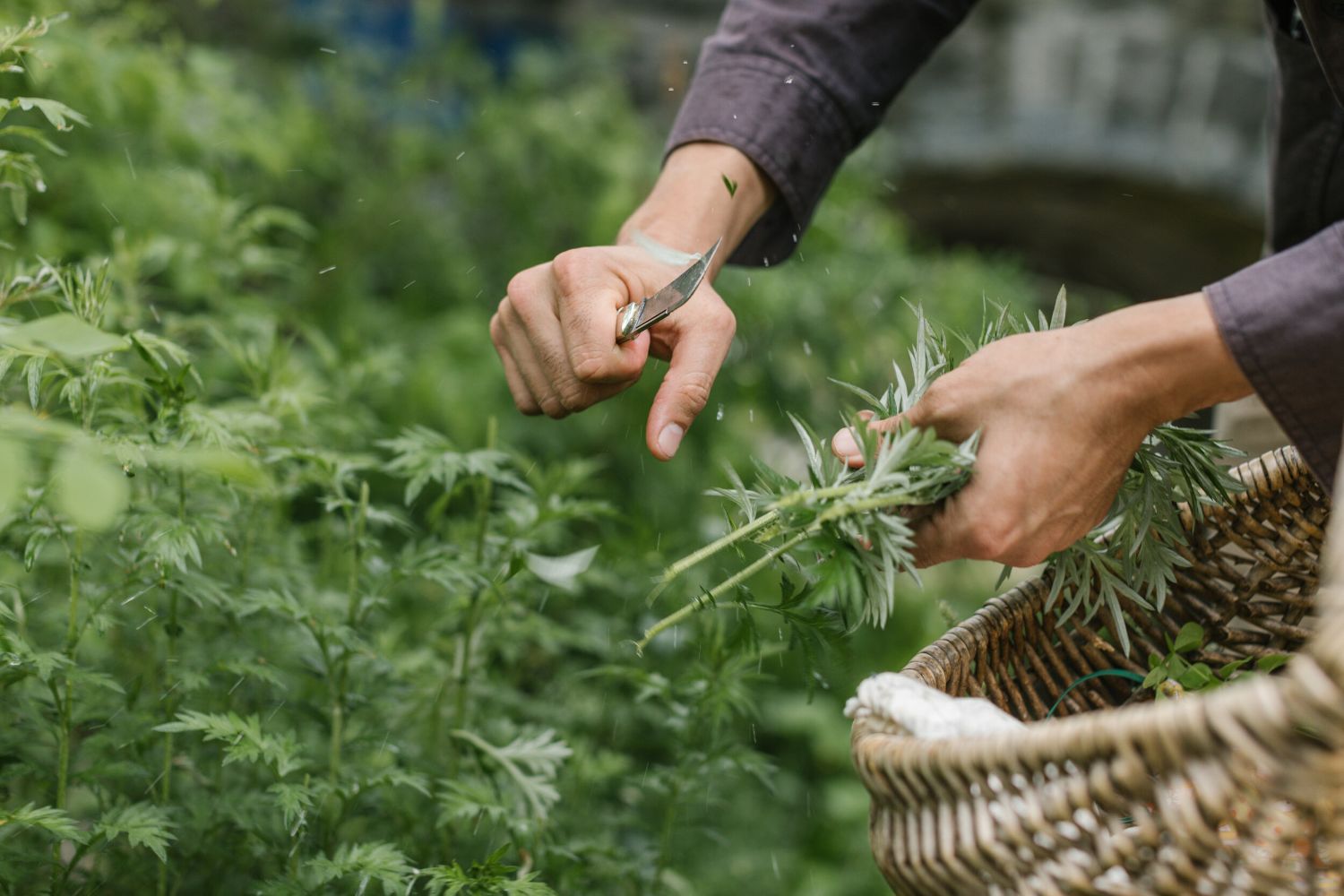
Spring is ripe with new growth, and with that growth comes opportunities for foraging! With such a high diversity of plant species here in Western North Carolina, we also have an abundance of edible plants. Check out these tips for a safe and sustainable harvest, and keep scrolling for our favorite forageables and a few resources we recommend.
Respect Yourself
- Learn the pollution risk of soils and waters you plan to forage, especially for invasive species as these could be treated with herbicides in public areas.
- Learn common look-alikes (some are poisonous!)
- Identify plants using at least two sources (like a guidebook and an app)
- Avoid discolored or sick-looking plants
- Use all your senses before tasting
- Taste and spit out before swallowing
- When trying a new plant, taste a tiny piece and wait a day to check your reaction
- Forage (carefully) off-trail to avoid chemicals and dog poop
- When in doubt, don’t put it in your mouth
Respect Others
- Rule of Ten: harvest only one native plant for every ten you find
- Avoid locally threatened or endangered plants
- Avoid trampling other plants and disturbing animal dwellings
- Ask plants for permission, listen for the answer, say thanks
- Cut or snip – avoid tearing – so plants can regrow
- Harvest for yourself and loved ones, not to sell
- Keep greens cool and damp until you get home to prevent waste
- Leave credit with the original foragers of this land
Native Plants
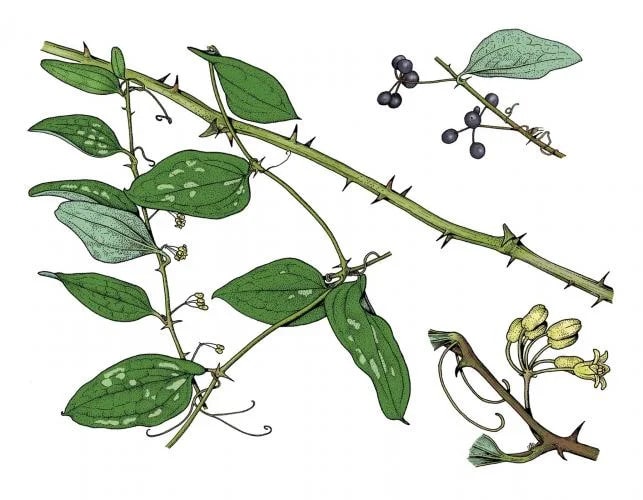
Greenbrier Smilax spp.
A native species of perennial vine found in meadows, roadsides, open woodlands, and disturbed soil. It has green thorns and heart-shaped leaves.
- Edible Parts: Young tips; young leaves; roots.
- When to Gather: Best in early to mid-spring.
Use the young tips like asparagus, but cook them only briefly to retain a crunch. They can also be eaten raw. The leaves can be used raw in salads or can be cooked by lightly grilling or blanching them. The roots are full of starch and can be used to thicken soups and stews.
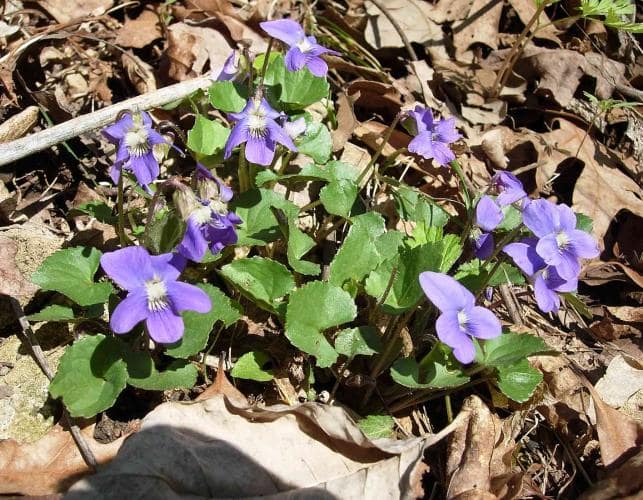
Violets Viola spp.
You’ve likely seen these beautiful purple or blue flowers before. They have heart-shaped leaves and the flowers have 5 petals in a butterfly shape. S
- Edible Parts: Flowers; leaves.
- When to Gather: These can be gathered anytime, but the leaves are best while they are still young and before the heat of summer hits them and they become stringy.
- Lookalikes: Warning! Violet has a couple of species that look similar, but are poisonous (Dwarf Larkspur (Delphinium tricorne) and Southern Blue Monks-hood (Aconitum uncinatum).
The flowers can be used raw in salads, candied in sugar, or infused into syrups. The leaves are similar to spinach in that they can be used raw in salads, added to soups, or cooked several ways.
Non-Native, Invasive Plants
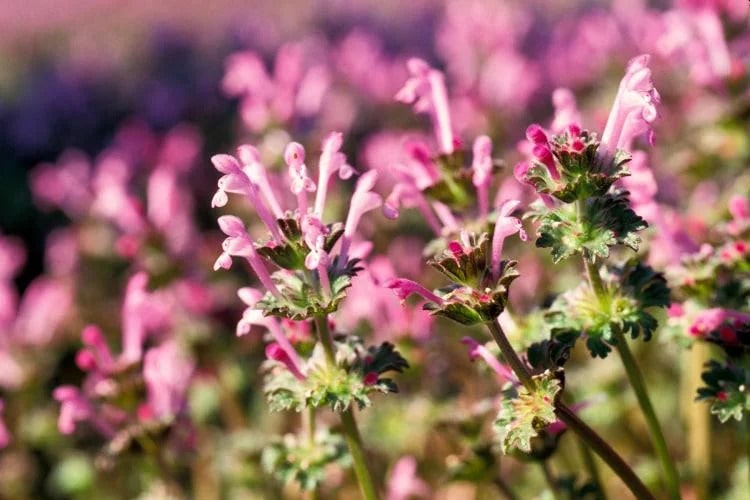
Henbit Lamium amplexicaule
This is a small plant in the mint family, but it lacks a distinct fragrance compared to mint. Its leaves are heart-shaped and jagged and it has a square stem, like most plants in the mint family.
- Edible Parts: Leaves; stems; flowers.
- When to Gather: Best harvested throughout winter and in early spring, before hot weather turns it bitter and stringy.
You can use the young leaves and tops in salads. It also holds up well when cooked. The leaves have a mild flavor and the stems are crunchy. They have an herbal, nutty flavor that goes well with creamy flavors. They work well as a base for pesto or as part of ravioli filling.
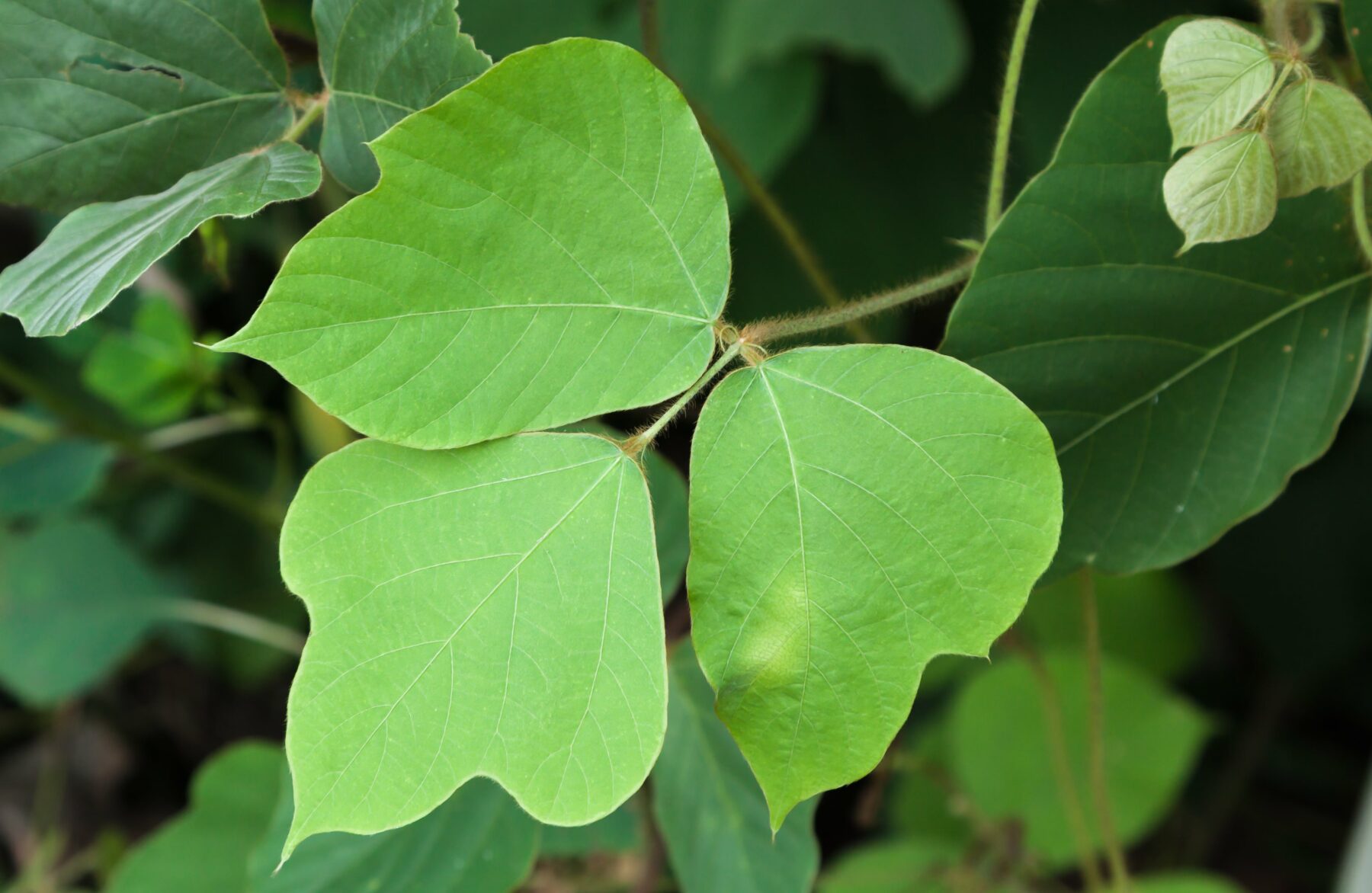
Kudzu Pueraria montana
“The vine that ate the South” can actually be eaten, not just by goats, but by humans too. This semi-woody vine has three alternate, ovate leaves and the vines are hairy.
- Edible Parts: Young leaves; flowers; roots
- When to Gather: It lies dormant in the winter and sprouts in late spring. You can gather the young leaves in late spring before they get tough.
The leaves have a bland flavor, but work great as a green in place of spinach, particularly in quiches or lasagna. They can also be fried like chips.
The flowers bloom in August and have a pleasant artificial grape-like floral fragrance. They are great made into a simple syrup or in jelly.
The roots are also edible, but are best harvested in the fall and winter. They contain a lot of starch and are great used as a thickening agent.
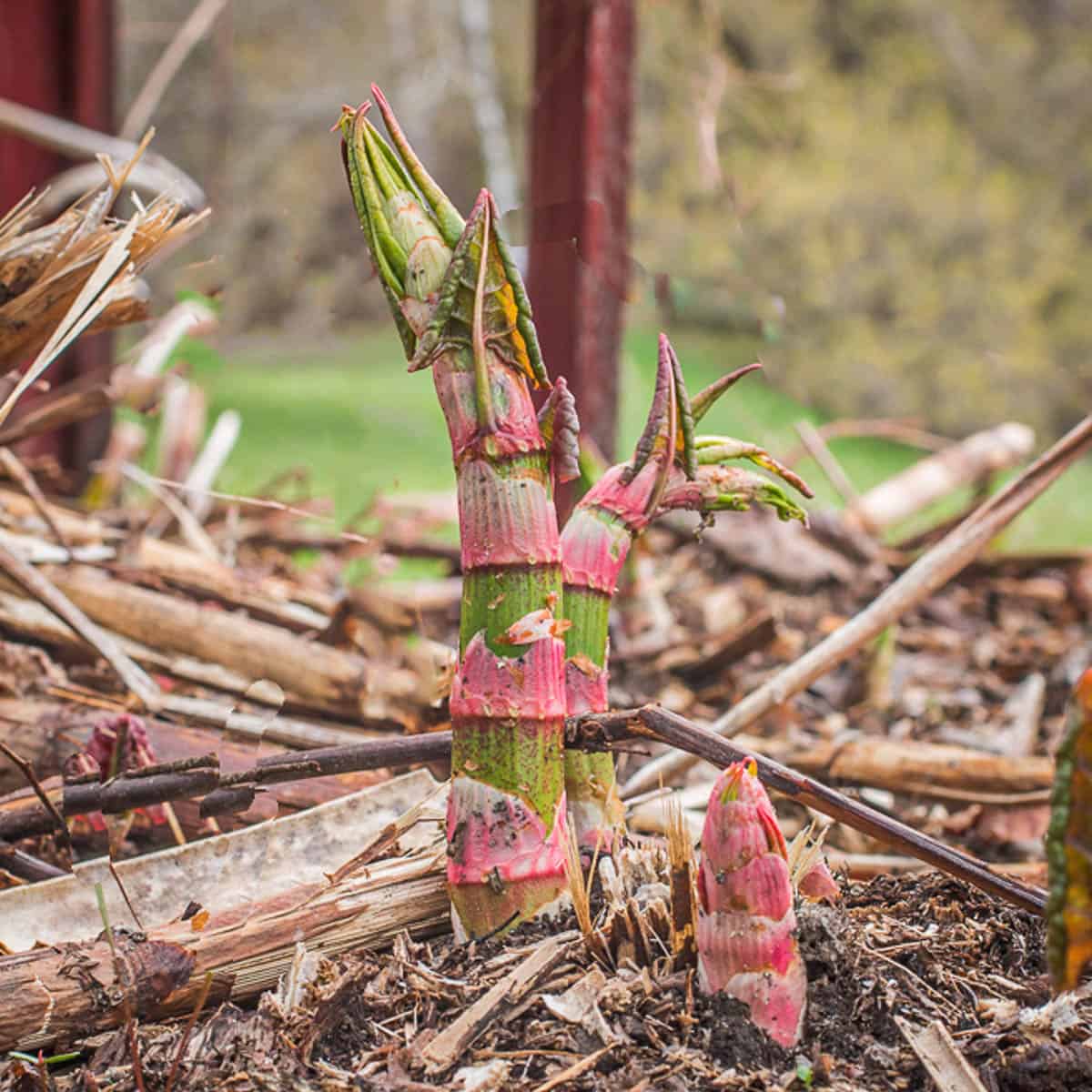
Japanese Knotweed Polygonum cuspidatum
When this emerges in the spring, it has hollow shoots that grow straight up with only a few leaves tightly furled at the tips. The shoots are pale green to red.
- Edible Parts: Young shoots
- When to Gather: Early spring, before the shoots begin branching.
Cut the young shoots off a couple of inches from the ground. If the plants are more than a foot high, but are still unbranched, try breaking the shoots off by hand. Like asparagus, they will snap off at the separation between the tender, edible part and the woody lower section. To prepare very young shoots, simply trim off the leaves. For older shoots, you may need to peel them.
You can use this in any recipe that calls for rhubarb. The taste is not identical, but has a similar sourness and texture. It can also be used in savory dishes or raw in salads.
Resources
As mentioned, it is good practice to use at least two sources when identifying plants. Here are some resources we like to use for edible plants as well as plant ID.
- Southeast Foraging by Chris Bennett
- Guide to the Vascular Plants of the Blue Ridge by B. Eugene Wofford
- Seek by iNaturalist
- NC Extension Gardener Plant Toolbox: https://plants.ces.ncsu.edu/
